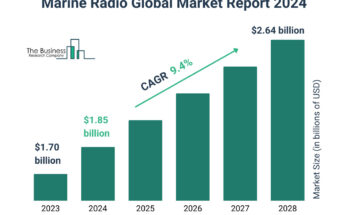The leading market players in the global Civil Aerospace Simulation and Training market primarily include CAE, FlightSafety International, Rockwell Collins, L-3 Communications, Lockheed Martin, Thales Training, Frasca, Indra Sistemas, Diamond Visionics LLC, and Vector Training Systems.
Civil Aerospace Simulation and Training Market – Market Overview
A civil flight simulator is a device that artificially recreates aircraft flight and various aspects of the flight environment. The flight simulator is used for pilot training on civil and military aircraft. There are two types of training: Initial training for new pilots and recurrent training for existing pilots.
Flight simulators are categorized into two types: FFSs and FSTDs. A FFS is a replica of a specific type of airplane cockpit, whereas a FSTD is a replica of the flight controls and other devices. There are four levels of FFS, levels A-D. Level D is the highest standard and provides aircraft acceleration in all six DOF. A flight simulator covers simulation in three areas such as aircraft, environment, and cueing. Both the FFS and FSTD should conform to ICAO and FAR regulations.
The market is growing significantly because of the increased use of virtual training methods. As a result of the increases in fuel prices, it has become difficult for airlines to provide airborne training to pilots. Therefore airlines prefer simulator-based training as it requires less time and costs less compared to training on actual aircraft. The increase in the number of aircraft orders has also contributed to the demand for flight simulators, which enable cost-effective training to be delivered in a safe environment
The utilization of new technologies such as computer graphics, mechanical actuation, and distributed computing are trends in the global civil aerospace simulation market that are improving the features of flight simulators. The increase in computing speed and memory capacity offered by high-performance computing capability is enabling simulators and training devices to produce better-quality images inside the cockpit.
High-fidelity simulation systems closely duplicate the real world and help pilots to prepare for any situation. Earlier, multi-monitor systems were used in the simulator to train pilots. However, the introduction of collimated displays and the cobra-curved display flight simulator has changed the market focus. Thus, there is a major shift from multi-monitor systems to high-fidelity displays.
The use of virtual training methods is growing rapidly as airborne operations are generally 10 times the cost of simulator operations. The cost associated with airborne training is increasing because of rising fuel prices across the world. Hence, airlines are facing difficulties in providing airborne training to pilots and shifting toward simulator-based training because of its greater cost-effectiveness.
As the requirements for flight training are changing and more importance is being given to aviation safety, it has become necessary for pilots to have simulator-based training. According to the FAA, to obtain an airline transport pilot certificate additional training is mandatory. This training includes both academic and flight simulator training. The flight crew has to undergo two days of training and testing in a flight simulator every six months. Thus, there is a shift from traditional training to simulation-based training.
Access Complete Report @ https://www.marketresearchfutu
Civil Aerospace Simulation and Training Market – Competitive Analysis
In-house manufacturing capabilities, a global footprint, range of product offerings, investment in R&D, use of newer technology, and a strong client base have become the key areas through which to gain a competitive edge. The global economic recovery, growth of the aviation sector, new aircraft orders, R&D and investment in fuel-efficient engines and the lucrative retrofit market have opened opportunities for aerospace industry players to compete and grow.
The global civil aerospace simulation and training market is highly competitive and vendors compete on the basis of cost, product quality, reliability, and aftermarket service. To survive and succeed in such an intensely competitive environment, it is crucial for vendors to provide cost-effective and high-quality civil flight simulators with latest technology and materials.
CAE and L-3 Link are the two leading vendors in manufacturing flight simulators. Their focus is primarily on developing technologies that are used in flight simulators.
Industry/ Innovation/ Related News:
April, 2012:- L-3 Link announced the acquisition of Thales Training and Simulation, a commercial aircraft simulation and training business. The acquisition was aimed at strengthening and expanding L-3 Link’s simulation business through the addition of a FFS offering. This will help in increasing the company’s global presence and growth outlook.
November, 2011:- Lockheed Martin announced the acquisition of Sim-Industries, a civil aerospace simulation company located in the Netherlands. The acquisition was aimed at expanding Lockheed Martin’s market reach by opening up long-term growth prospects.
Civil Aerospace Simulation and Training Market – Segments
For the convenience of the report and enhanced understanding; the civil aerospace simulation and training market is segmented in to three key dynamics
Segmentation by Simulator Type: Flight Training Devices (FTD), Full Flight Simulators (FFS), and Flight Simulation Training Devices (FSTD).
Segmentation by Aircraft Type: Fixed Wing and Rotary Wing.
Segmentation by Regions: Comprises Geographical regions –Americas, Europe, APAC and Middle East and Africa.
Civil Aerospace Simulation and Training Market – Regional Analysis
The market in the Americas is growing at a steady pace due to the increase in the passenger traffic which has resulted an increase in the number of aircraft. Also, with the introduction of very light jets in this region will contribute to the growth of the market.
The growing economy and increase in passenger traffic are expected to increase the demand for new aircraft in APAC. China and India are the two key countries that are expected to drive the growth of the aircraft market in the region. The increasing demand for aircraft means that the region is emerging an important aviation market and this is expected to contribute to the growth of the civil aerospace simulation and training market in APAC during the forecast period.
The growth in the market in Europe is increasing at a slower pace than in APAC. The strict regulatory frameworks and extensive ban on night flights is limiting the operations of airlines. Airlines in the region also have to fly shorter operating hours. However, due to the increase in the number of aircraft in service in the recent years will contribute to growth of the civil aerospace simulator and training market in the region.



